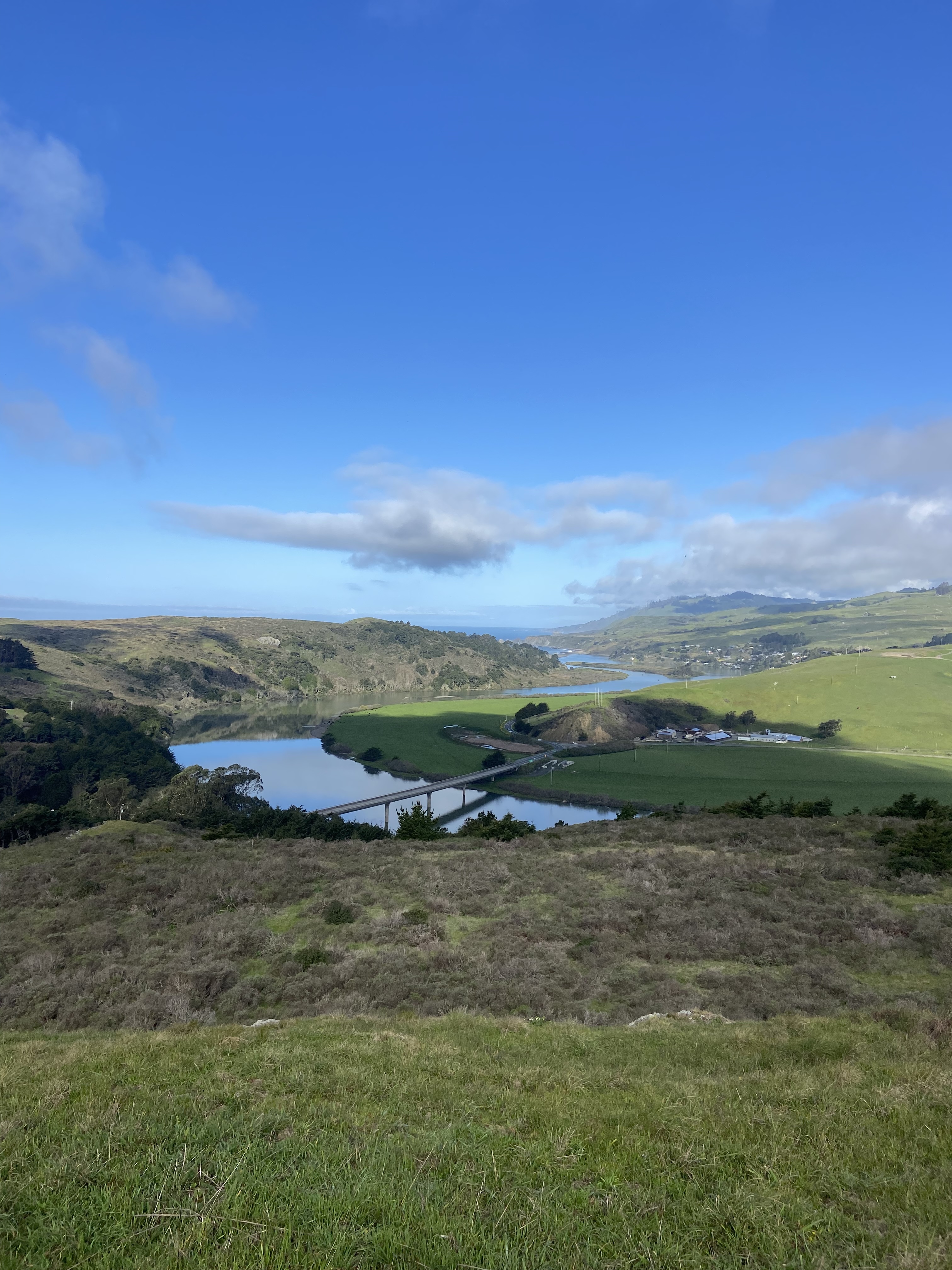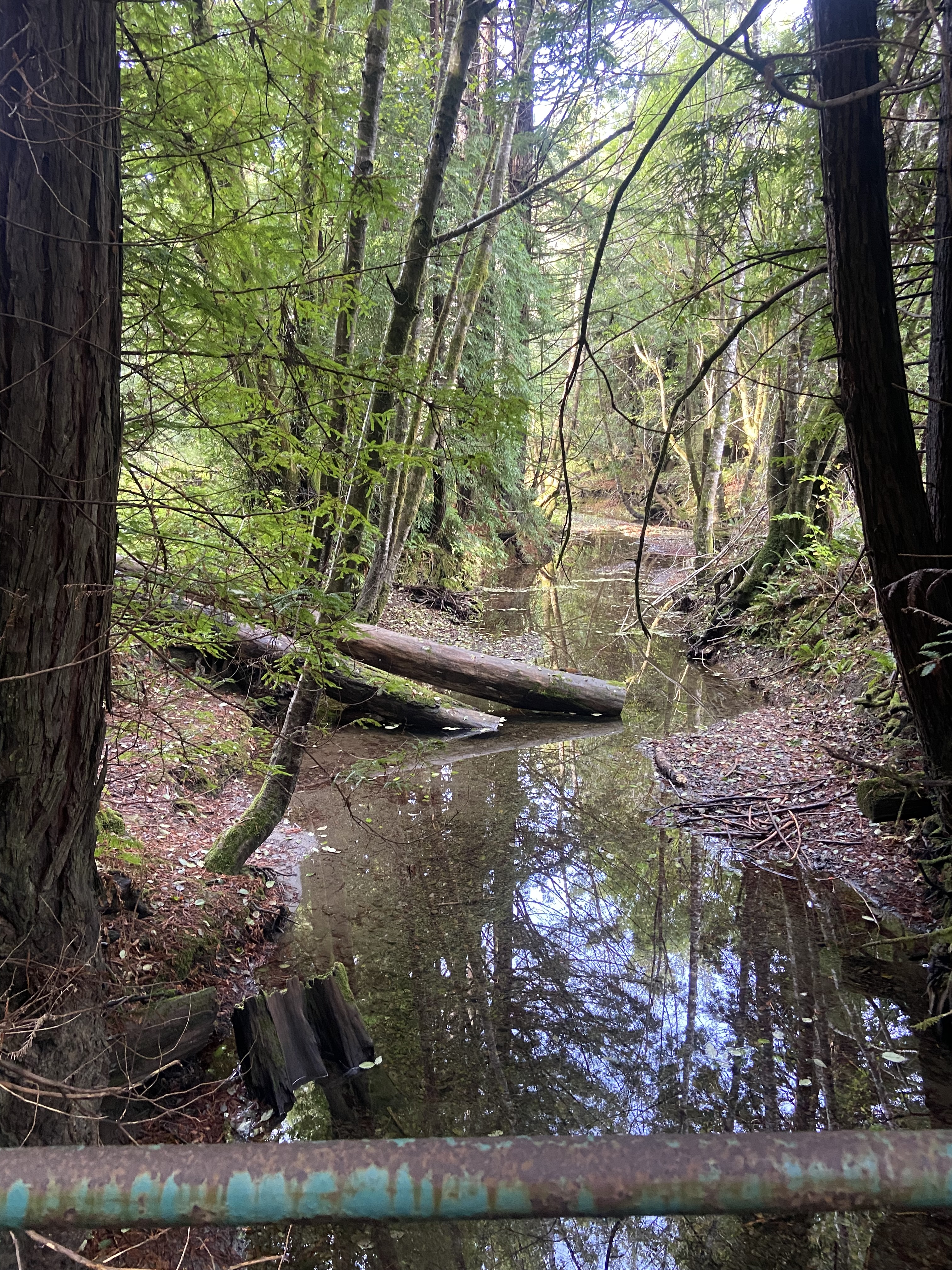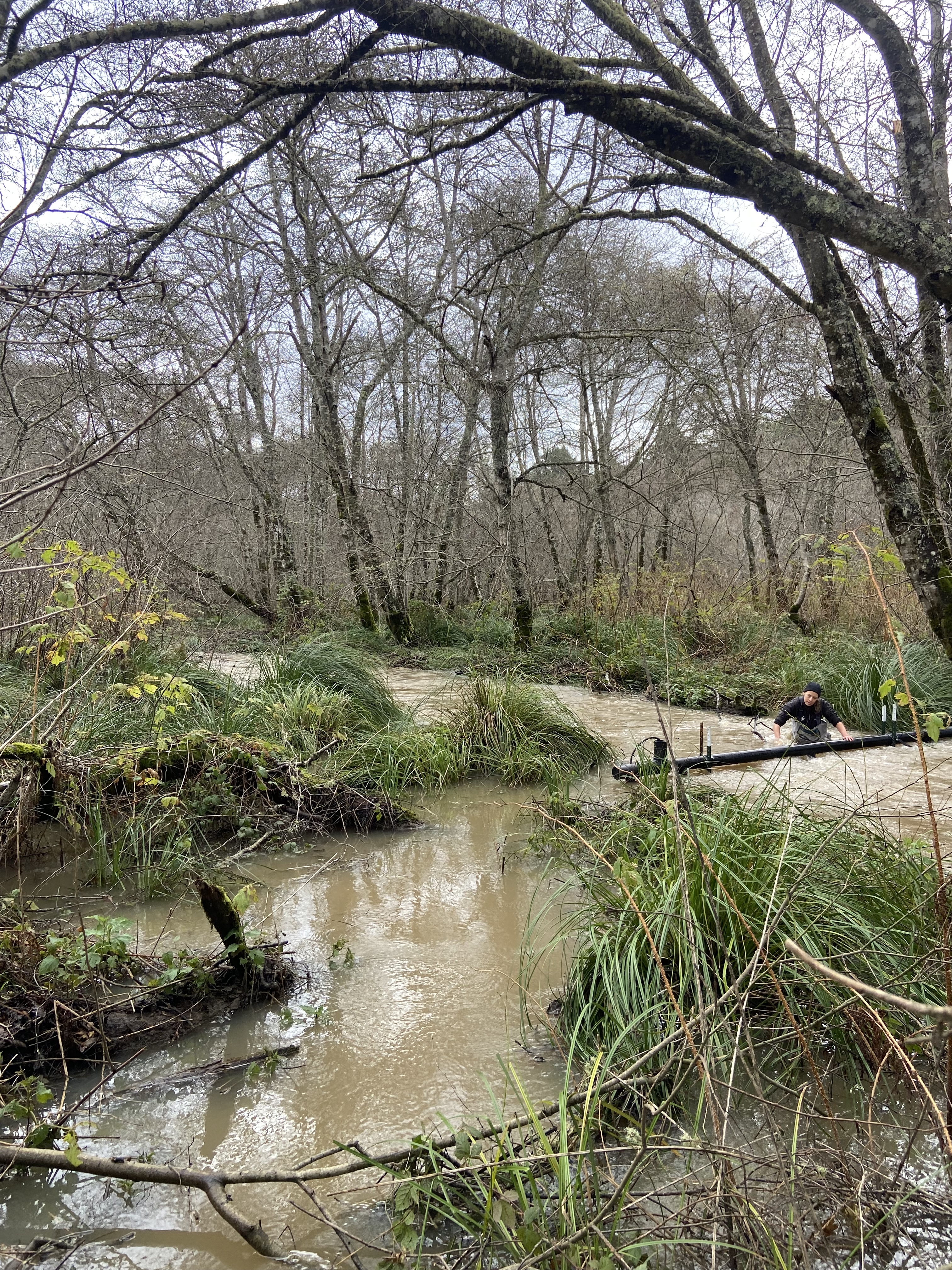
New research published today in Ecology Letters found that coho salmon, one of five Pacific salmon species, have more dynamic migration patterns than previously thought. The study reveals these alternative life histories made coho populations more stable over time, which could be a missing piece in conservation research and action more broadly.
Salmon are keystone species (they play an essential role in the health and function of their larger ecosystems) and coho are endangered in California. Researchers with UC Berkeley and California Sea Grant led the 12 year-long study in Willow Creek, a tributary to the Russian River located in northern California’s Sonoma County, to evaluate the effectiveness of salmon restoration efforts.
“It’s commonly thought that, during their first year of life in freshwater, coho live and eat near to where they hatched prior to migrating to the ocean for adulthood,” said Dr. Hank Baker, lead author of the paper and postdoctoral researcher within the Carlson and Grantham labs and Freshwater Group at UC Berkeley. “However, we noticed that some individuals leave their natal habitat early and spend months in other parts of the river network before migrating. We found that this subtle diversity within the population contributed quite dramatically to a more robust and stable population overall.” The effect is similar to that of a well-diversified financial portfolio, according to Baker.
Like all salmon, coho hatch in freshwater, migrate to the ocean as juveniles, and return to their natal, freshwater habitat as adults to breed. In this study researchers documented something unique: prior to reaching the ocean, a subset of the coho population in Willow Creek left their natal habitat and spent three to four months in a wetland complex in the lower stretches of the creek (one type of “non-natal” habitat). This time in non-natal habitat provided these fish with abundant food sources and safety from high river flows in the winter. It also may have helped them time their entry to the ocean to coincide with good growth conditions.

An upstream view of coho salmon spawning habitat in upper Willow Creek.
According to researchers, this alternative life history seems to be adaptive. Coho that left their natal habitat returned to spawn as adults at a higher rate than their counterparts that followed the conventional strategy. Moreover, the presence of this alternative strategy made the population as a whole more stable over time.
The authors note significant implications for future research and salmon restoration in Willow Creek and beyond. First, restoration efforts must be more holistic to include the whole river–not just natal habitat.
“There’s a hopeful message here–restoring a mosaic of habitats is an important strategy for rebuilding abundant and resilient salmon populations,” said Dr. Stephanie Carlson, who co-authored the study and is the A.S. Leopold Chair in Wildlife Biology within Rausser College’s Department of Environmental Science, Policy, and Management (ESPM). “Every bit of habitat matters.”
“Our results really highlight the importance of thinking about the whole watershed when we are trying to restore salmon populations,” said Mariska Obedzinski, co-author and an Extension Specialist for California Sea Grant who led the salmon monitoring program that collected the data used in the study. “Providing the fish with a diversity of habitats is key to their recovery.” Obedzinski is also an ESPM graduate student.
Another key finding is that coho did not seek out non-natal habitat in years when river flows were diminished by drought. Drought and other extreme weather events caused by climate change already pose significant risks to the long term health and survival of endangered species like salmon. This study shows that more homogenous coho populations resulting from drought are a compounding threat.
"We can take action to ensure that in wetter years, fish are able to take advantage of productive habitats to improve their growth and survival, and build their resilience to climate change," said co-author Dr. Ted Grantham, Professor of Cooperative Extension in UC Berkeley’s Department of Environmental Science, Policy, and Management.

Mariska Obedzinski inspects a PIT antenna--used to track juvenile salmon movement-- during high flows in lower Willow Creek.
Researchers also noted important takeaways for conservation more broadly. Diversity in migration patterns has been demonstrated in many other animals, including pronghorn, elk, insects, and birds. The authors call for future restoration strategies that aim to protect this diversity to promote healthy populations, rather than solely focusing on protections for the most common strategies.
“This project is an example of the type of work we'll be doing more often thanks to the new Stone Center for Environmental Stewardship on campus, which has a goal of doing science in service of partners and communities,” continued Dr. Carlson. Carlson co-directs the Stone Center, which is part of the university’s Rausser College of Natural Resources. “Through the new center, we hope to continue these kinds of collaborations with restoration practitioners to evaluate the success of interventions so that we can learn from those efforts, and improve upon them.”
The study took place between 2012-2023. It is part of a larger restoration project in Willow Creek and is funded by NOAA.
"The NOAA Restoration Center is incredibly proud to partner with UC Berkeley and California Sea Grant on this important research of coho salmon to help us restore habitat for their benefit," said Joe Pecharich, NOAA Fish Biologist/Habitat Specialist.
Read the full paper here. For more about salmon and freshwater research at UC Berkeley, visit the Berkeley Freshwater site.
See California Sea Grant's press release related to the report publication here.
